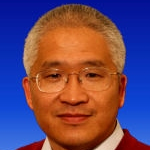The 10th Anniversary of JMSE — Recent Advances in Section Ocean Engineering
A special issue of Journal of Marine Science and Engineering (ISSN 2077-1312). This special issue belongs to the section "Ocean Engineering".
Deadline for manuscript submissions: closed (20 June 2023) | Viewed by 6365
Special Issue Editor
Interests: offshore geotechnics; ocean engineering; coastal groundwater hydraulics; offshore wind energy
Special Issues, Collections and Topics in MDPI journals
Special Issue Information
Dear Colleagues,
Marine geoharzard covers wide range of marine science and engineering processes and issues. This research topic has attracted great attentions among marine engineers and scientists in recent years due to growth of huaman activities in marine environments. A better undertsanding of physic processes, an appropriate design of marine infrastructures and solutions of existing and furture marine geoharzard associated with the new developments in marien environments. This special issue will report recent advances in the field and provide future scopes for researchers.
In this Specia Issue, we are looking for the papers in the following theme (not limit to):
- Marine energy systems (including offshore wind, wave and tidal energy etc.) and the associate engineering and sientific issues;
- Natural disester including storm surge,a and earthquakes;
- Marine slope stability and submainre debris flow;
- Sediment transport in marine environments including deep water and shallow caostal regions;
- Recent development of field measurements and observations in deep marine environments;
- Development of marien ming such as gas hydrate and the associated engineering problem;
- Fluid-structure-seabed interactions around marine infrastrcutures and associate seabed instability including liquefaction, scour and shear failure;
- Hydordynamics in marine systems;
- Solute transport in marine environments;
Prof. Dr. Dong-Sheng Jeng
Guest Editor
Manuscript Submission Information
Manuscripts should be submitted online at www.mdpi.com by registering and logging in to this website. Once you are registered, click here to go to the submission form. Manuscripts can be submitted until the deadline. All submissions that pass pre-check are peer-reviewed. Accepted papers will be published continuously in the journal (as soon as accepted) and will be listed together on the special issue website. Research articles, review articles as well as short communications are invited. For planned papers, a title and short abstract (about 100 words) can be sent to the Editorial Office for announcement on this website.
Submitted manuscripts should not have been published previously, nor be under consideration for publication elsewhere (except conference proceedings papers). All manuscripts are thoroughly refereed through a single-blind peer-review process. A guide for authors and other relevant information for submission of manuscripts is available on the Instructions for Authors page. Journal of Marine Science and Engineering is an international peer-reviewed open access monthly journal published by MDPI.
Please visit the Instructions for Authors page before submitting a manuscript. The Article Processing Charge (APC) for publication in this open access journal is 2600 CHF (Swiss Francs). Submitted papers should be well formatted and use good English. Authors may use MDPI's English editing service prior to publication or during author revisions.
Keywords
- marine geoharzard
- dynamic loading in marine environment
- fluid-structure-seabed interactions
- marine slope stability
- earthquake
- tasumani
- marine infrastructures





